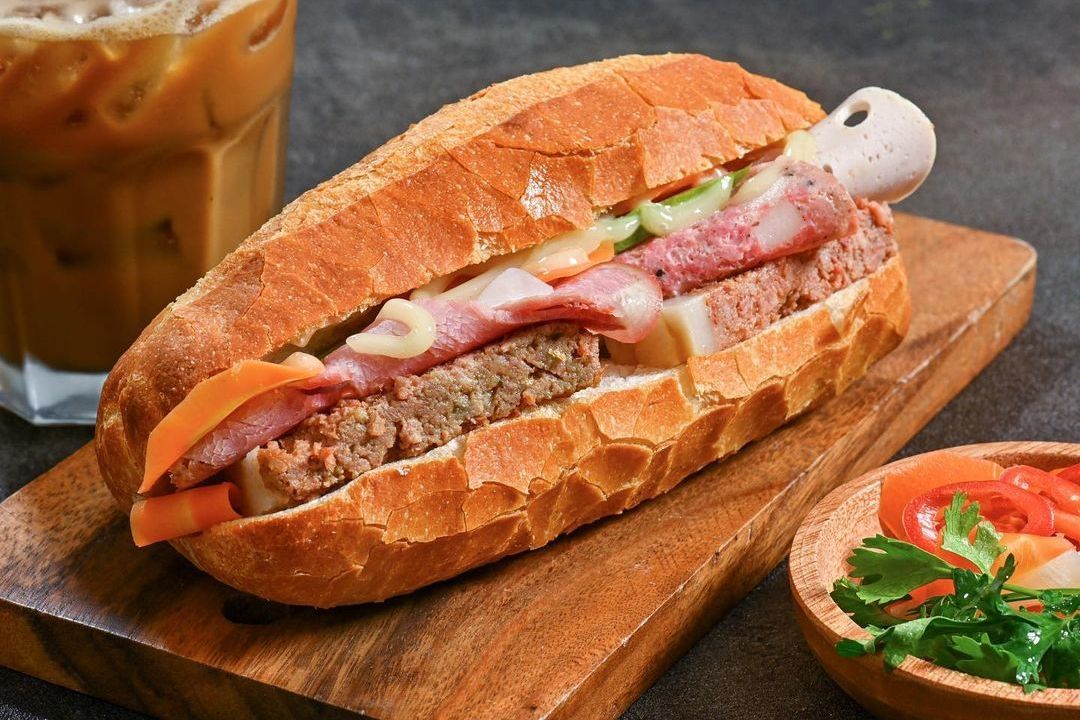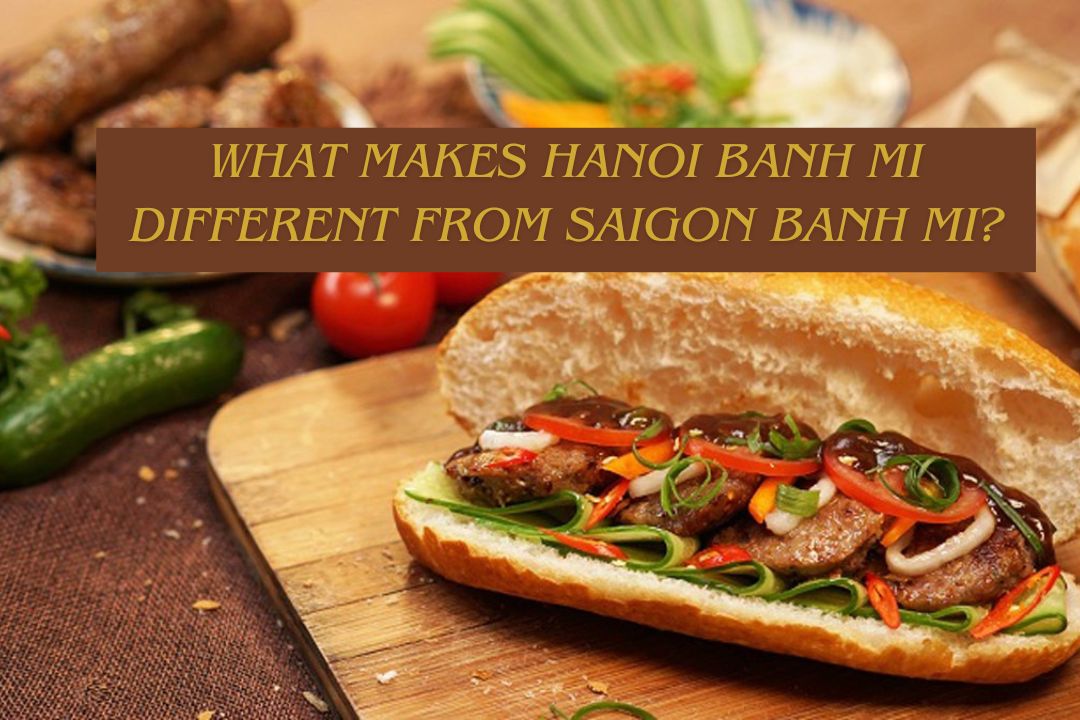Vietnamese banh mi is a fundamental combination of pate, ham, cured meat, and vegetables spread across the S-shaped land. However, banh mi in each region carries a unique flavor with distinct fillings and pate sauce. When it comes to the oldest origins of banh mi, Saigon and Hanoi are the first places that come to mind. So, what sets Saigon banh mi apart from Hanoi banh mi? Let’s explore the distinctive characteristics of these two iconic cities.
Flavor of Hanoi Banh Mi:
Compared to Saigon, Hanoi banh mi made its appearance a bit later. The people of Saigon used to refer to banh mi as “banh tay” because it was imported and originated from France. Until the 1930s, banh mi gradually became widely popular, serving as a sandwich for breakfast to start the day.

Hanoi banh mi doesn’t differ significantly in terms of appearance. It is also a round loaf with a crispy outer layer and a soft, fragrant, and fluffy white filling made from wheat flour.
Hanoi banh mi favors using pate as the base seasoning. Any type of banh mi that aims for deliciousness must have a layer of rich pate, along with a bit of cucumber and pickles for a refreshing and tangy taste. Adding a few slices of sausage, various types of pork, and savory pork floss completes the banh mi.
Additionally, the banh mi is stuffed with thinly sliced red sausage – a characteristic feature of Hanoi – and cold fat meat, topped with spicy chili soy sauce and cucumber slices, along with a bunch of herbs. Taking a bite reveals a nostalgic flavor.
Flavor of Saigon Banh Mi:
Unlike Hanoi banh mi, which exudes a nostalgic and deeply Vietnamese flavor, Saigon banh mi has a colorful array of tastes due to the influence of various bread flavors from different regions. People in Saigon love to try new and exotic dishes, which is why banh mi here is like a colorful bouquet, displaying extreme diversity in terms of color, ingredients, and flavors.
Freshly baked banh mi, golden and emitting the fragrance of wheat flour, boasts a crispy crust that blends harmoniously with the naturally rich and pink pate layer, creating a traditional Saigon flavor. The difference lies in the fact that Saigon’s pate does not have the fat slices on the surface like in Hanoi banh mi. Instead, Saigon locals innovate with traditional sauces such as avocado sauce, tomato sauce, mayonnaise, meatball sauce, etc., depending on the secret recipe of each vendor.

Saigon banh mi features a rich and diverse filling, including cold fat meat, ham, grilled meat, Chinese sausage, pork floss, Vietnamese pork sausage, bacon, homemade mayonnaise, fresh Pate, a touch of sourness from pickles, cucumber, cilantro, and a few slices of fresh chili. A cup of iced milk coffee nearby completes the culinary experience.
In conclusion, whether in Hanoi or Saigon, each place brings a unique and novel flavor, deeply rooted in regional culture. Vietnamese banh mi can truly be considered a “national dish” of the Vietnamese people. Regardless of the location, the soul of each region is infused into the banh mi through unique variations by each vendor, making them distinct and incomparable. Vietnamese banh mi has traveled with the Vietnamese people across continents and has even made it into the “Top 10 Best Street Foods in the World
